How to Adapt Your Property to Meet Long-Term Tenant Needs
Adapting your property to meet the needs of long-term tenants is essential to ensuring their satisfaction, reducing turnover, and maximizing the return on investment (ROI). As the demand for long-term rental properties increases, understanding tenant expectations and making necessary adjustments can help you stand out in a competitive market. This guide will provide practical advice and actionable steps to help property owners modify their properties to better suit long-term tenants.
Understanding the Needs of Long-Term Tenants
Long-term tenants are typically looking for stability, comfort, and convenience. They want to feel like their rental home is more than just a place to live; they seek a comfortable environment where they can build a life. Understanding these needs is the first step in adapting your property to attract and retain high-quality tenants.
Stability and Security
One of the most significant concerns for long-term tenants is the stability and security of their living situation. They want a lease agreement that offers security for a longer period, ideally with options to renew or extend the lease. Tenants also appreciate properties in safe neighborhoods with a low crime rate, as well as features that enhance their sense of security within the home, such as reliable locks, security systems, and adequate lighting around the property.
Best Practice: Consider offering multi-year lease options or longer-term agreements to provide tenants with a sense of stability. Additionally, investing in good security measures such as an alarm system, outdoor lighting, and reinforced doors can enhance tenant satisfaction.
Comfort and Functionality
Long-term tenants value comfort and functionality over time. Properties should be well-maintained, clean, and free of significant issues such as plumbing leaks, heating or cooling problems, or electrical faults. An attractive living space with thoughtful design choices that cater to tenants’ needs can make a significant difference.
Example: Upgrading kitchen appliances to energy-efficient models or adding features like in-unit laundry can increase comfort and convenience for tenants. A well-maintained property with functional and modern amenities is more likely to attract long-term tenants.
Community and Location
The location of your property plays a critical role in the decision-making process of long-term tenants. Proximity to work, schools, public transportation, parks, and shopping centers can make a significant difference. Furthermore, the overall neighborhood’s reputation, including safety, cleanliness, and available amenities, will impact tenants’ choice to stay.
Best Practice: Research the surrounding community and invest in maintaining the property’s curb appeal. Promoting the benefits of the location, such as nearby public transportation options or community events, can also attract tenants who value their surroundings.
Evaluating Your Property for Long-Term Adaptations
Before implementing changes, it’s important to assess your property thoroughly. This evaluation should focus on both the physical condition of the property and the amenities it offers. Here are several areas you should review:
Structural Integrity
Ensure that the foundation, roofing, and walls are in good condition. A well-maintained structure is key to tenant satisfaction and minimizing repair costs in the long run. Tenants want to avoid dealing with constant maintenance issues, which can lead to frustration and early lease terminations.
Actionable Tip: Conduct a professional property inspection regularly to identify potential issues with the structure. Address any foundational problems or structural damage immediately to prevent costly repairs in the future.
Interior Layout and Design
The interior layout and design of the property should be functional, spacious, and adaptable to various lifestyles. Tenants are more likely to stay if the living space feels spacious, well-lit, and easy to navigate. Creating an open-plan layout, if possible, can make small spaces feel larger and more modern.
Best Practice: If your property features older layouts or designs, consider making minor renovations or adjustments. For example, removing unnecessary walls or adding open shelving in kitchens can improve the space’s functionality and aesthetic appeal.
Maintenance and Repair Systems
Long-term tenants value prompt and reliable maintenance. Ensure that your property has a clear and easy-to-follow maintenance request system in place. Set expectations for how quickly repairs will be made and adhere to those timelines to build trust and satisfaction.
Example: Many tenants appreciate having a 24/7 emergency maintenance service available for urgent issues, such as plumbing failures or broken heating systems. This provides peace of mind and shows that you’re committed to maintaining the property to a high standard.
Upgrading Key Features for Long-Term Tenants
To meet the specific needs of long-term tenants, consider upgrading or adding certain features that increase the property’s value and appeal. These enhancements can range from cosmetic improvements to structural changes that improve the quality of life for tenants.
Energy-Efficient Features
With increasing awareness of sustainability, long-term tenants are often drawn to energy-efficient properties. Adding energy-saving appliances, upgraded insulation, energy-efficient windows, and programmable thermostats can lower utility costs and appeal to environmentally conscious renters.
Actionable Tip: Installing LED lighting, water-saving fixtures, and upgrading insulation can significantly reduce energy consumption and lower costs. These upgrades not only benefit tenants but also reduce your expenses over time.
Modern Kitchen and Bathroom Features
Kitchens and bathrooms are often the most important spaces in a rental property. Long-term tenants appreciate well-designed, updated kitchens and bathrooms that make daily living more comfortable. Upgrades such as new countertops, modern cabinetry, and high-efficiency appliances can dramatically improve the property’s attractiveness.
Example: Installing stainless steel appliances, granite countertops, or energy-efficient dishwashers can appeal to tenants who want quality living spaces. These upgrades add value to the property and can make a significant difference when retaining long-term tenants.
Storage and Organization Solutions
Storage is a top concern for long-term tenants, especially in apartments or smaller homes. Providing ample closet space, built-in shelving, or storage units can make a significant difference in tenant satisfaction. Adding functional features such as walk-in closets or pantry storage can appeal to families or tenants with a lot of belongings.
Best Practice: Invest in custom closets, overhead storage in garages, or multi-purpose furniture like built-in cabinets to improve functionality and tenant satisfaction.
Ensuring Tenant Satisfaction with Communication
Adaptation to tenant needs is not just about the physical property but also about how you interact with and support tenants throughout their lease. Effective communication is crucial in building trust and ensuring that tenants feel valued.
Clear Communication Channels
Open and clear communication channels should be established from the start of the leasing process. Tenants need to know how to reach you for questions, concerns, or maintenance requests. Consider offering multiple ways for tenants to contact you, including email, phone, and a dedicated online portal for maintenance requests.
Example: Providing tenants with an online portal to track requests, make rent payments, or communicate directly with you can improve the relationship and make managing the property more efficient.
Regular Check-ins
While tenants don’t want to be constantly contacted, a regular check-in to ensure everything is functioning well within the property can help build rapport and reduce the chance of issues escalating. Scheduling routine inspections and asking tenants if they need anything can prevent minor problems from turning into major repairs.
Actionable Tip: Send a short email or text message after the first few months of the lease to ask if tenants are happy with the property. Offering to fix any issues early on can help you retain tenants long-term.

Get a Free Rental Analysis
Want to know how much your home will rent for? We’ll send you a free rental report!
While the physical adaptations of your property are crucial, fostering a positive living experience for long-term tenants requires ongoing efforts in tenant relations, property management, and proactive maintenance. This section will dive deeper into the importance of tenant retention strategies, the role of property management systems, and how to handle specific challenges that may arise.
Tenant Retention Strategies
Long-term tenants are a valuable asset to any property owner, offering consistent income and reducing the need for constant marketing and re-renting. Retaining tenants for extended periods not only saves you time and money but also fosters a stable, mutually beneficial relationship. Here are key strategies to ensure that your tenants stay longer.
Building Relationships with Tenants
Strong tenant relationships are built on trust and respect. Regularly engaging with tenants can help foster this connection. Remember that satisfied tenants are more likely to stay longer, and they might also refer friends or family to your property.
Actionable Tip: Hosting tenant appreciation events, such as a holiday gathering or a small community get-together, can foster a sense of belonging. Acknowledge important events like birthdays or anniversaries with a simple gesture like a card or small gift to make tenants feel valued.
Offering Lease Renewal Incentives
While long-term tenants appreciate stability, offering lease renewal incentives can provide the extra push for them to extend their stay. Whether it’s a small rent reduction, an upgrade to the property, or a flexible renewal term, these incentives can motivate tenants to commit for another lease cycle.
Example: If tenants have been with you for several years, consider offering them a rent freeze or a modest reduction in rent in exchange for a longer lease term. This makes them feel appreciated and more inclined to stay longer.
Creating a Community Atmosphere
Many long-term tenants stay because they feel a sense of community in their living environment. If possible, make your property more than just a place to live—make it a community that encourages connections between tenants. This can enhance tenant satisfaction and help prevent turnover.
Best Practice: Create shared spaces, such as a community garden or a lounge area, where tenants can interact. Hosting seasonal or annual events, like a neighborhood barbecue, can also help build camaraderie and encourage tenants to stay in a comfortable environment.
The Role of Property Management Systems
To successfully manage long-term tenants, adopting an efficient property management system (PMS) is essential. These systems streamline operations, improve communication, and ensure that tenant needs are met in a timely manner. With proper management tools, property owners can improve tenant retention and satisfaction while reducing the chances of mistakes or oversights.
Streamlining Communication
Modern property management systems often include tenant portals that allow tenants to make maintenance requests, pay rent, or communicate directly with property managers. These systems also enable landlords to track the status of maintenance requests and lease agreements in real time, making management more efficient.
Example: A tenant portal with 24/7 access to payment systems and maintenance request forms can reduce tenant frustration and improve overall satisfaction. Clear records of tenant interactions also allow for better customer service and responsiveness.
Automated Rent Collection and Payment Tracking
A key feature of property management systems is automated rent collection and payment tracking. These systems ensure that payments are processed on time, and tenants receive automatic reminders when their rent is due. This minimizes late fees and helps maintain a positive relationship between property owners and tenants.
Actionable Tip: Offering tenants the option to set up automatic payments through the property management system simplifies the process for both parties. It ensures timely rent collection and improves cash flow for property owners.
Reporting and Analytics for Better Decision Making
A good property management system can generate reports that provide insights into tenant behaviors, such as payment patterns and maintenance requests. This data can help property owners identify potential issues, make informed decisions, and adjust strategies to improve tenant retention.
Example: If the system shows that tenants in a particular building are frequently requesting maintenance for certain issues (like HVAC repairs), it could indicate a recurring problem that needs to be addressed. Use this data to implement preventative measures or property upgrades.
Handling Common Challenges in Long-Term Rental Properties
Managing long-term rental properties presents unique challenges that require thoughtful solutions. From handling maintenance issues to addressing tenant complaints, property owners must be prepared to navigate these challenges while maintaining a positive tenant relationship.
Managing Maintenance Requests
Tenants in long-term rentals expect prompt responses to maintenance issues. Over time, wear and tear will occur, and property owners must be proactive in addressing these concerns. Failure to do so can lead to tenant dissatisfaction and potential early lease terminations.
Best Practice: Implement a system to prioritize maintenance requests based on urgency. For example, plumbing or electrical issues should be dealt with immediately, while cosmetic repairs or non-urgent issues can be scheduled for a later time. Ensuring that repairs are completed quickly will show tenants that you care about the property’s upkeep and their comfort.
Preventing Property Damage
Long-term tenants will eventually make changes to the property over time, whether through normal wear and tear or personal modifications. It’s important to manage these changes to ensure that the property doesn’t sustain unnecessary damage.
Actionable Tip: Set clear expectations with tenants regarding what modifications are allowed within the rental agreement. For instance, if tenants want to paint walls or hang heavy items, outline the procedures and consequences to ensure that alterations are done responsibly. Regular property inspections can also help identify potential damage before it becomes a larger issue.
Dealing with Rent Increases
Over the years, you may find it necessary to raise rents to keep up with inflation, property maintenance costs, or market conditions. Rent increases can be a sensitive topic, especially for long-term tenants who may have become accustomed to a particular price point.
Best Practice: When raising rent, offer transparent communication about the reasons behind the increase. Provide tenants with plenty of notice—typically 60-90 days—and consider offering improvements to the property or other incentives to ease the impact of the increase. A gradual increase rather than a large jump can also help tenants adjust without feeling financially strained.
Handling Complaints Effectively
Tenant complaints are inevitable in any rental situation, and how you handle them can make or break the relationship. Listening to tenant concerns and taking immediate action to resolve issues is crucial for maintaining a positive rapport.
Example: If a tenant complains about noisy neighbors or recurring maintenance issues, address the concern quickly by taking appropriate action. This could mean speaking with the neighbors or hiring a contractor to resolve the issue. Keeping tenants informed about the steps you’re taking to solve the problem shows that you value their feedback.

In the final section of this guide, we will explore additional strategies for adapting your property to meet long-term tenant needs. We’ll focus on sustainable property improvements, how to handle changing market conditions, and the importance of maintaining a proactive mindset in property management. These strategies are designed to help you stay ahead of the curve and ensure that your rental property remains competitive, functional, and attractive to tenants over the long term.
Investing in Sustainable Property Improvements
Sustainability has become a key consideration for many renters, especially long-term tenants who are invested in the long-term well-being of both their living space and the environment. Making sustainable improvements to your property not only helps reduce operational costs but also makes your rental more attractive to eco-conscious tenants.
Energy Efficiency Upgrades
One of the most effective ways to improve the sustainability of your property is through energy efficiency upgrades. Tenants are often attracted to properties that help reduce their utility bills, and energy-efficient features are particularly appealing to those living long-term.
Actionable Tip: Consider installing energy-efficient appliances, LED lighting, or smart thermostats. These upgrades can significantly reduce energy consumption and lower utility costs. In addition, consider insulating windows and doors, sealing gaps, and adding weather stripping to improve heating and cooling efficiency.
Example: Installing a high-efficiency HVAC system can help control energy costs while ensuring that tenants remain comfortable year-round. The upfront investment in these systems may have a long-term payoff through reduced operational costs and higher tenant retention rates.
Water Conservation Initiatives
Water conservation is another area where long-term tenants can benefit from improvements. Many areas are becoming more focused on water conservation, with local regulations often incentivizing property owners to invest in water-saving measures.
Best Practice: Install low-flow fixtures in bathrooms and kitchens, such as showerheads, faucets, and toilets. These improvements can reduce water consumption and lower tenants’ water bills while contributing to environmental sustainability.
Example: Installing water-efficient irrigation systems for outdoor landscaping can reduce water waste and lower maintenance costs. Tenants will appreciate the proactive measures taken to conserve resources while improving the property’s aesthetic appeal.
Adapting to Changing Market Conditions
The rental market is constantly evolving, influenced by factors such as economic shifts, neighborhood development, and demographic changes. To keep your property attractive to long-term tenants, it’s essential to stay attuned to market trends and adapt accordingly.
Staying Competitive in the Rental Market
Even if your property is well-maintained, changes in the local rental market can impact its attractiveness. Market conditions such as rent inflation, supply and demand dynamics, and the popularity of certain areas can affect tenant decisions. To stay competitive, regular market analysis is essential.
Actionable Tip: Regularly research the local rental market and assess comparable properties in your area. If rent prices in your neighborhood are increasing, consider raising your rents incrementally to stay in line with the market. However, be cautious about raising rents too significantly, as this could push existing tenants out.
Responding to Tenant Demographics
Long-term tenants may also have changing needs as they experience life transitions, such as getting married, starting families, or retiring. Understanding the shifting demographics of your tenant base allows you to adapt your property’s amenities and offerings to meet evolving preferences.
Example: If your tenants include young families, consider adding child-friendly amenities like playgrounds, security features, or additional storage space. Conversely, if your tenants are older adults, offering features like elevator access or single-story units may become more attractive as they age.
Best Practice: Stay in touch with your tenants to understand their evolving needs. Regular communication, such as asking for feedback during lease renewals, helps identify what tenants value most and allows you to implement changes to keep the property attractive.
Proactive Property Management Mindset
A proactive approach to property management is one of the most effective ways to meet long-term tenant needs and maintain a positive relationship with tenants. This mindset focuses on anticipating issues before they arise, addressing tenant concerns promptly, and ensuring that the property remains well-maintained and functional.
Preventative Maintenance Practices
Preventative maintenance is the cornerstone of proactive property management. Regular inspections and routine maintenance can prevent costly repairs and minimize tenant disruptions. This strategy can extend the lifespan of major systems and reduce the need for emergency repairs, ensuring that tenants remain satisfied with their living conditions.
Best Practice: Set a schedule for regular property inspections, such as quarterly or semi-annually, to check for issues like plumbing leaks, electrical problems, or appliance wear and tear. Address minor problems before they escalate into costly repairs.
Example: For a property with a lot of plumbing fixtures, schedule an annual inspection of the water supply and drainage systems to prevent potential leaks or clogs. Similarly, ensure HVAC systems are serviced regularly to avoid unexpected breakdowns, especially in extreme weather conditions.
Communication and Transparency
Clear and consistent communication with tenants is vital for a long-term, successful relationship. Being transparent about property management decisions, such as rent increases, upcoming repairs, or community updates, helps build trust and keeps tenants informed.
Actionable Tip: Use a combination of digital communication tools (such as emails or a tenant portal) and face-to-face interactions to keep tenants up to date. Let them know about upcoming maintenance or any changes that may affect them well in advance.
Example: If there are going to be planned maintenance or construction projects on the property, notify tenants early and provide regular updates. This not only helps tenants plan accordingly but also shows that you are thoughtful about minimizing any inconveniences.
Building a Long-Term Vision for Your Property
To adapt your property successfully to meet long-term tenant needs, you need to view property management as an ongoing, evolving process. Rather than making one-time changes, aim to create a long-term vision that guides your approach to property upkeep, tenant satisfaction, and overall business strategy.
Regular Property Upgrades
As your property ages, certain aspects may require upgrades or redesigns to meet the evolving demands of tenants. Consider making periodic improvements, such as updating kitchens or bathrooms, replacing worn flooring, or adding modern amenities that cater to tenants’ desires for comfort and convenience.
Best Practice: Develop a 5-10 year plan for upgrading your property to ensure it stays competitive and continues to meet tenant needs. This could include budgeting for specific upgrades, such as replacing the roof, resurfacing parking lots, or modernizing common areas. Plan these upgrades strategically to minimize disruption to tenants.
Example: If your property was built several years ago, upgrading to include energy-efficient windows or expanding outdoor common areas could make your rental more appealing. Offering new features, such as high-speed internet access or charging stations in communal areas, can set your property apart from competitors.
Evolving with Technological Advancements
Technology is increasingly influencing the rental experience, from smart home devices to property management software. Staying up to date with technological advancements can improve tenant satisfaction and streamline operations for property managers.
Actionable Tip: Install smart locks, lighting systems, and thermostats to offer tenants more convenience and security. These devices can make it easier for tenants to manage their living spaces and help you optimize energy use.
Example: Installing smart home technology can offer tenants the convenience of controlling lighting, temperature, and security systems remotely. This feature can appeal to tech-savvy tenants and make your property stand out in a competitive market.
Final Thoughts
Adapting your property to meet long-term tenant needs requires a combination of strategic planning, thoughtful investments, and proactive management. By creating a sustainable, well-maintained property, staying attuned to tenant needs, and regularly improving the living experience, you can ensure that your tenants remain happy and committed. Long-term tenant satisfaction not only boosts retention rates but also enhances the overall profitability of your rental business. Investing in upgrades, staying ahead of market trends, and fostering strong tenant relationships will lead to a successful, sustainable rental operation.
Suggested Relevant Links:
Comprehensive Guide to Investment Property Tax Deductions: Maximize Your Savings
Long-Term Rental Property Management Palm Beach
Maintenance Strategies for Luxury Properties in Lake Worth Beach
Avoid Legal Pitfalls: How Property Managers Keep Your Maintenance Compliant and Lawsuit-Free
How Do Landlords Protect Their Property Value While Renting?
FAQ: Adapting Your Property to Meet Long-Term Tenant Needs
1. What are the key features that long-term tenants look for in a rental property?
Long-term tenants typically value stability, affordability, and comfort. Features such as energy efficiency, reliable maintenance, convenient location, and adequate amenities (e.g., parking, storage, and outdoor spaces) are highly desirable.
2. How can I make my rental property more energy-efficient?
Upgrades like installing energy-efficient appliances, smart thermostats, LED lighting, and improving insulation (windows, doors, etc.) can significantly reduce energy consumption. These features appeal to tenants looking to lower utility bills and reduce their environmental footprint.
3. What are some cost-effective property improvements for long-term tenant retention?
Simple upgrades, such as fresh paint, upgraded fixtures, or new flooring, can make a big difference without a large investment. Adding amenities like high-speed internet access or community spaces can also enhance tenant satisfaction.
4. How do I handle rent increases for long-term tenants?
Rent increases should be reasonable and in line with market conditions. Notify tenants well in advance, and consider incremental increases rather than large hikes. Transparent communication is key to maintaining positive relationships.
5. How can I ensure my property remains competitive in the market?
Regularly assess the local rental market, invest in ongoing property upgrades, and pay attention to tenant feedback. Offering desirable features like smart home technology, energy-efficient appliances, and community amenities can help differentiate your property.
6. What should I do if my tenants’ needs change over time (e.g., starting a family)?
Stay in communication with tenants and be open to adapting the property to meet their changing needs. This may involve offering more storage space, creating family-friendly amenities, or providing accessible features for aging tenants.
7. How important is preventative maintenance for tenant satisfaction?
Preventative maintenance is crucial. Regular inspections and addressing minor issues before they become major problems helps keep the property in good condition, reduces emergency repairs, and ensures tenant satisfaction.
8. What role does sustainability play in attracting long-term tenants?
Sustainable features, such as water-saving fixtures and energy-efficient appliances, appeal to environmentally-conscious tenants. These upgrades can also reduce tenants’ utility costs, making your property more attractive for long-term rentals.
9. How can technology improve the tenant experience in my property?
Smart home features, such as smart thermostats, keyless entry, and energy monitoring devices, can offer convenience, security, and energy savings, making your property more appealing to modern tenants.
10. What should I do to keep tenants happy and encourage long-term leases?
Maintain open communication, address maintenance requests promptly, and ensure the property remains well-maintained. Offering incentives, such as lease renewal discounts or home upgrades, can also foster long-term tenant retention.




Pingback: Lease Renewals and Negotiations for Long-Term Rentals- Atlis Property Management | Rental Property Management South Florida